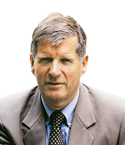|
Europe’s “green dash” is ebbing. One of the pillars of the EU green energy policy, the cap-and-trade CO2 quota system, the European Trading System (ETS), is crumbling after an April 2013 vote in the European Parliament rejected a cut in emission quotas for sale, to support carbon prices. The market reacted by cutting carbon prices almost one-half, in contrast to the EU Commission’s ambition to raise CO2 prices. Carbon emissions now trade at about $3.50/metric tonne, but the cost of carbon capture and sequestration (CCS) may be about $100. European carbon prices are now so low, as to portray the ETS as a symbolic measure for fighting climate change, with no real impact. Symbols may satisfy ideological needs, but they give little incentive for cutting emissions and have little effect. This is a serious blow to the EU’s green energy policy, aimed at almost entirely phasing out fossil fuels by 2050. Instead, economic realities take the upper hand. The green lobbies have accused European Parliament members of putting jobs before climate. Indeed, they are right. The argument is that in the currently dire, stagnant economy, with rising unemployment, Europe does not need a further deterioration of competitiveness through even higher energy costs. The compelling fact is that shale oil, and especially shale natural gas, have pushed down North American prices, creating a competitive advantage that Europe needs to take seriously. The issue is whether this is but the first pillar of the EU energy policy that crumbles. The EU Energy Roadmap, adopted in December 2011, had three objectives: competitiveness, security of supply and sustainability. Ambitions were to reduce CO2 emissions 80-95% by 2050, to eliminate CO2 emissions from power generation; to enhance energy efficiency; to achieve technological leadership in renewable energy; and to reduce energy import dependence. The justifying assumptions were that world population growth means rising energy demand and higher prices; that oil and natural gas supplies from the Middle East, North Africa and Russia are unreliable; that Europe’s dependence on oil and gas imports represents a risk for the security of supply and the balance of pay-ments; that the world’s increasing use of fossil fuels enhances global warming and the risk of costly climate catastrophes; that Europe should take a lead in climate policy; and that the value of CO2 abatement is virtually unlimited. Evidently, the underlying assumption is that the risk of global warming is so overwhelming, that any cost is justified. Brussels policymakers apparently did not imagine that world prices might stabilize and even fall. They hardly realized that oil and gas supplies from the Middle East, North Africa and Russia are quite reliable. The possibility that global warming might slow down, or even reverse, is still anathema to EU policymakers and the green lobbies surrounding them. Likewise, the prospect that CO2 emissions might be considered less harmful, and that CO2 abatement costs might be perceived as unreasonably high, was not considered. Evidently, the European parliamentarians were less sheltered from economic realities than Brussels policymakers. High energy costs, in addition to a strong euro, compromise industrial competitiveness and employment. Late 2012 gas prices were three times as high in Germany as in the U.S., eroding industrial competitiveness. In November 2012, the utilization of Germany’s combined, installed, solar and wind power generation capacity was only 7%. In Germany, power prices are likely to increase by close to 50%, further compromising industrial competitiveness. Frankly, the EU has no viable energy policy. The basis is lacking. There is no vision of what kind of energy that Europe will need, a generation from now. Green ideology has replaced economic analysis as the guideline. Ambitions of micro management have replaced market mechanisms. The dream has been disturbed by a wake-up call from the democratically elected European Parliament, in contrast to Brussels bureaucrats. To remain competitive, and to secure employment and living standards, Europe needs efficient, clean energy supplies. The present dash for renewables is costly and harmful to the environment, as cheap, imported coal replaces natural gas, causing local pollution as well as rising CO2 emissions. The immediate result of the crisis is to return energy policy from the EU level to national governments. European governments preoccupied with budget balances and employment are likely to cut subsidies for renewable energy. On the EU level, a sensible measure would be to impose a CO2 tax rather than cap-and-trade to reduce carbon emissions. The tax should be at a level to justify CCS. A carbon tax would promote natural gas in power generation and heating. A follow-up measure should be to integrate the power and gas markets and impose transparent, low-cost access to the grids, preferably under the supervision of a common regulator. Rising imports of natural gas give incentives to promote trade and closer economic integration with the Middle East, North Africa and Russia, to the benefit of all parties involved. Outside the EU, there is some cooperation. Since the agreement on the Barents Sea maritime border between Norway and Russia, Norwegian activity has taken off, resulting in gas finds. Russia seems interested in importing gas from northern Norway for energy needs in the Kola region. For Russia, this might be less costly than developing its own offshore fields. For Norway, it might be better to serve a nearby Russian market than the more distant UK or continental markets. |




